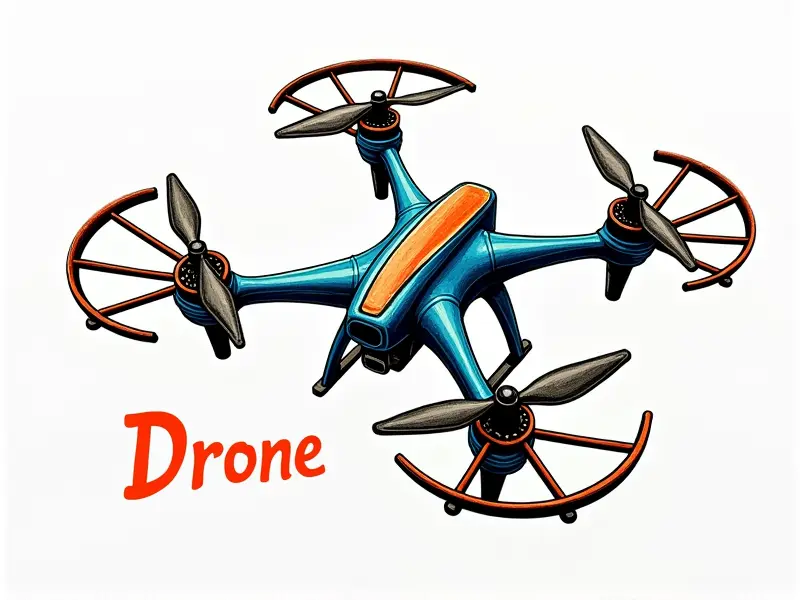How to balance RC airplane?

Mastering RC Airplane Balance Tips
Balancing an RC (radio-controlled) airplane is crucial for achieving optimal flight performance and stability. Proper balance ensures that your aircraft can maintain level flight, maneuver effectively, and respond accurately to control inputs. This article will guide you through the process of balancing your RC plane, providing detailed tips and techniques to help you achieve perfect center of gravity.
Achieving Optimal Balance in RC Planes
Optimal balance is key to ensuring that your RC airplane performs well in various flight conditions. A balanced aircraft will have better stability, smoother maneuvers, and improved overall handling. The goal is to position the center of gravity (CG) correctly so that the plane can maintain a steady attitude without excessive pitch or roll.
Understanding how weight distribution affects performance is essential for any RC pilot. By adjusting weights in strategic locations, you can fine-tune your aircraft's balance and enhance its flight characteristics.
Quick Guide: Balancing Your RC Plane
Balancing an RC plane involves several steps:
- Weigh the Aircraft: Determine the total weight of your plane, including batteries and any additional components.
- Identify Center of Gravity (CG): Locate the point where the aircraft balances perfectly on its longitudinal axis. This is typically around 25-30% of the wing chord from the leading edge for most RC planes.
- Adjust Weight Distribution: Use weights or ballast to shift the CG forward or backward as needed, ensuring it falls within the recommended range.
Easy Steps to Balance RC Aircraft
Finding and setting the correct balance for your RC plane can be simplified into a few straightforward steps:
- Measure Weight: Use a precise scale to measure the total weight of your aircraft.
- Determine CG Location: Mark the wing chord where the CG should ideally be located for optimal performance.
- Add or Remove Weights: Adjust ballast in the nose, tail, or other strategic locations to achieve the desired balance point.
Perfect RC Airplane Center of Gravity
The center of gravity (CG) is a critical factor in determining how your RC plane will fly. A well-balanced aircraft has its CG positioned correctly along the longitudinal axis, typically around 1/4 to 1/3 of the wing chord from the leading edge.
Proper placement of the CG ensures that the plane can maintain level flight without excessive pitch or roll. It also affects the responsiveness and stability during maneuvers, making it easier to control in different flight conditions.
RC Plane Stability: Balancing Made Simple
Maintaining proper balance is essential for achieving stable RC airplane flights. A balanced aircraft will have better lift distribution, smoother turns, and improved overall handling. Here are some tips:
- Use Weights Strategically: Place weights in the nose or tail to adjust the CG as needed.
- Check Wing Alignment: Ensure that both wings are level and properly aligned with each other.
- Battery Placement: Position batteries closer to the CG for better balance and stability.
Fine-Tuning RC Airplane Flight Control
To fine-tune your RC plane's flight control, you need to ensure that it is perfectly balanced. Here are some steps to help you achieve this:
- Calibrate the CG: Use a balance board or similar tool to accurately determine and adjust the center of gravity.
- Tune Control Surfaces: Adjust elevator, rudder, and aileron trim settings for smooth and responsive flight control.
- Battery Management: Manage battery placement and weight distribution carefully to maintain optimal CG throughout flights.
Tips for Perfect RC Plane Stability
Maintaining stability in your RC plane is crucial for safe and enjoyable flying. Here are some tips to help you achieve perfect stability:
- Regular Checks: Perform regular checks on the balance and alignment of your aircraft.
- Weather Conditions: Be aware of how different weather conditions affect flight performance, and adjust accordingly.
- Practice Maneuvers: Regularly practice maneuvers to improve control and stability in various flight scenarios.
RC Plane Setup: Balancing Made Simple
Setting up your RC plane for optimal balance involves several key steps. Here’s a quick guide to help you get started:
- Weigh the Aircraft: Measure the total weight of your plane and any additional components.
- Determine CG Location: Use a balance board or similar tool to find the ideal location for the center of gravity.
- Add Weights as Needed: Adjust ballast in strategic locations to achieve the desired balance point.
Quick Guide to Balancing RC Planes
Balancing your RC plane is a straightforward process that requires attention to detail and precision. Follow these steps for optimal results:
- Weigh Your Plane: Measure the total weight of your aircraft.
- Locate CG Point: Use a balance board or similar tool to find the center of gravity.
- Tune for Stability: Adjust weights and control surfaces as needed to achieve perfect stability.
RC Plane Center of Gravity Guide
The center of gravity (CG) is a critical factor in determining how your RC plane will fly. Here’s a guide to help you find and set the ideal CG:
- Weigh Your Aircraft: Measure the total weight, including batteries and other components.
- Determine Ideal CG Location: Use a balance board or similar tool to locate the center of gravity.
- Tune for Optimal Performance: Adjust ballast and control surfaces as needed to achieve perfect stability and responsiveness.
Conclusion
Balancing your RC plane is essential for achieving optimal flight performance, stability, and overall handling. By following the tips and techniques outlined in this article, you can ensure that your aircraft is perfectly balanced and ready for any flying conditions. Regular checks and adjustments will help maintain peak performance throughout its lifespan.

